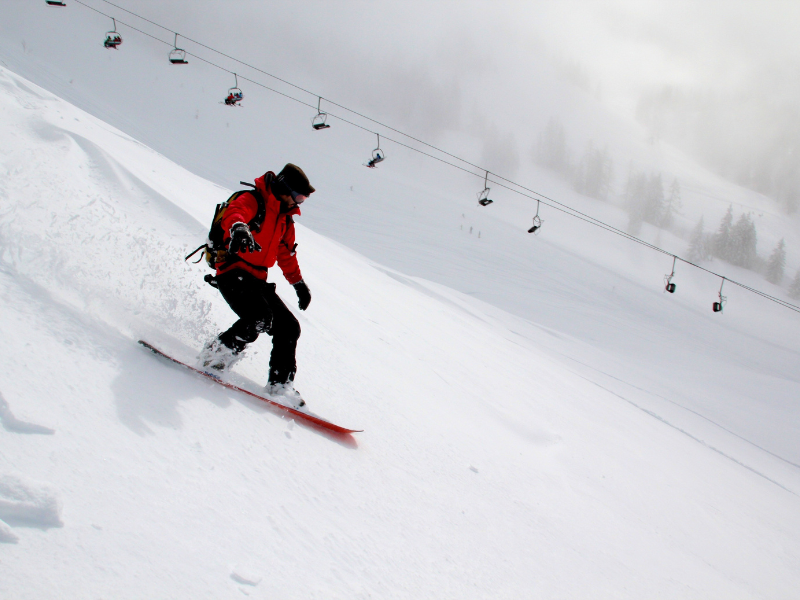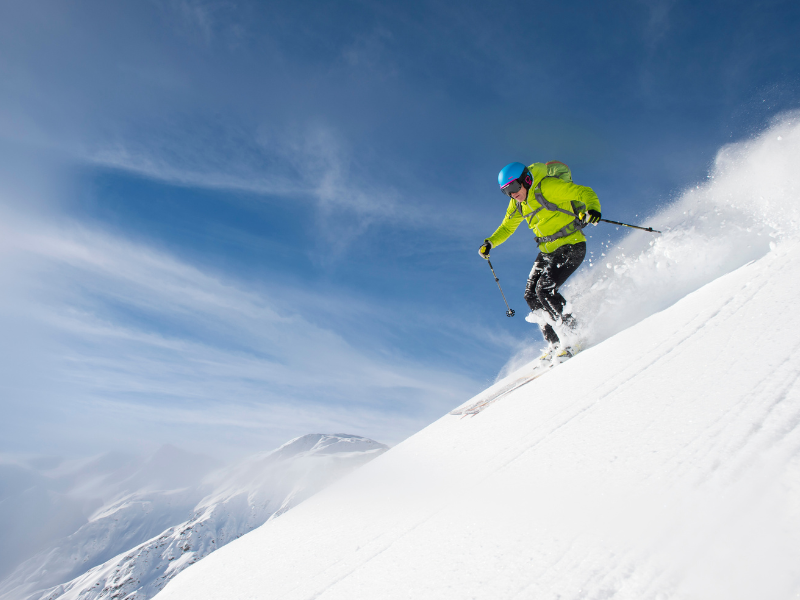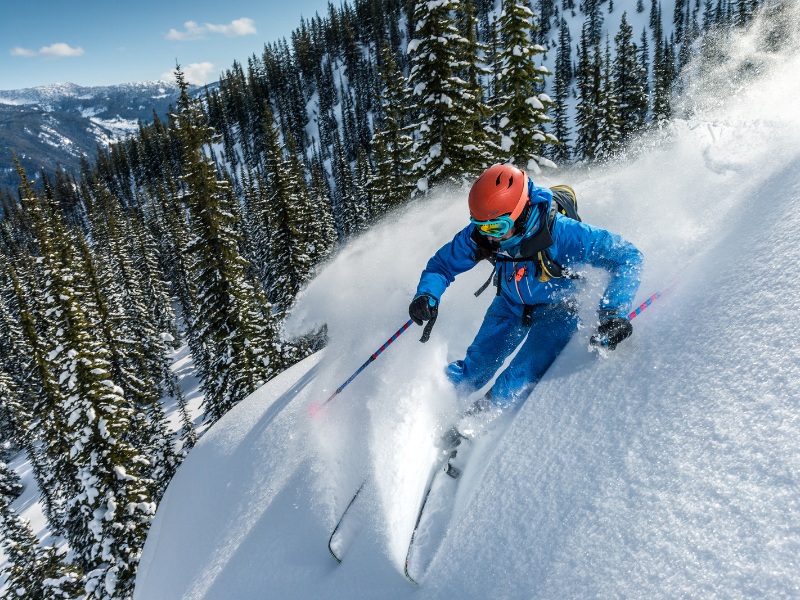You love snowboarding but hate how your clothes always end up smelling like a wet dog. And after a couple of weekends of sweat and snow, the odor is telling you that it's time to wash and dry your pants. If you've got a date with the mountain in the morning, you're probably wondering how long it takes for snow pants to dry.
Snow pants can take anywhere from 4 to 48 hours to dry. Each manufacturer is different, but the consensus is that air-drying snow pants after every wash is the best method, which is why it takes so long.
While snow pants are constructed in countless ways, using a wide range of fabrics, they fall into only a few categories. And each category has a general time it takes to air-dry.
If you learn which category your pants fall into, you'll never have to look online for how to care for them again. So let's quickly look at each, and turn cleaning your snow pants into less of a chore.
Dry Times for the 3 Types of Snow Pants
If you're reading the care tag on your snow pants, it can seem like you need a Ph.D. just to wash and dry them. But there are essentially three types of snow pants, and each has different air-drying times.
Pro Tip: Drying apparel outdoors instead of indoors is always quicker. There are some stipulations though based on fabric, for instance, wool, can't have direct sunlight. But for snow pants, if it's possible to dry them outdoors, they will dry quicker.
Whether you own bibs or traditional pants, the following info applies to both. Ok, let's begin.
1. Softshell - Dry Time: 4-5 Hours
Softshell snow pants are great for a relaxed ski or snowboard trip. If you want to hit the mountain hard, you want to use a different kind of pants.
Construction and Materials of Softshell Pants
Softshell snow pants are made from synthetic materials, a blend of materials like nylon, spandex, polyester, etc. When the fibers are woven, they are pulled together tightly, and the pants become breathable, water-resistant, and durable.
Yielding stretchier, softer snow pants.
Strengths and Weaknesses of Softshell Pants
What makes softshell pants great is also their Achilles heel.
The water-resistant coating doesn't mean they are waterproof. The difference being water-resistant materials have a threshold before moisture can break through, and waterproof has no limitations.
That's the biggest reason they are recommended for casual days on the slopes because if you are getting snow-soaked or simply sweating too much, moisture will start seeping through your outer layer.
Dry Times of Softshell Snow Pants
- Indoor Air-Drying: Up to 5 Hours
- Outdoor Air-Drying: Up to 4 Hours
Softshell snow pants dry more quickly than the other categories of snow pants. Materials certainly play a role in this, but softshell pants are just that - a shell.
They do not have the ‘shell’ material of uninsulated or insulated pants.
2. Uninsulated (Shell) - Dry Time: 6-18 Hours
Uninsulated pants, also just referred to as shell pants are much more durable than softshell pants. They'll be the best choice for that intense skiing and snowboarding day.
If it's a warm day, you could get away with only wearing the shell as pants, making it ideal for certain times of the season, or sun-soaked slopes.
Shells can be traditional pants or bibs made of shell material. and bib designs of pants with a ‘shell’ material.
Construction of Uninsulated Pants
Shells can come in a wide range of materials. The most common is going to be a synthetic blend of nylon or polyester, much like softshell pants. The primary difference is in construction though.
There are three layers to uninsulated snow pants.
The outside layer is meant to repel water and reduce wind making it through to your body. The middle layer is a membrane later that is either waterproof or at least highly graded for water resistance. This layer is also breathable, which is a must.
And the inside layer is there to take any moisture away from your body and push it toward the outside of the pants. All three layers work together to keep you dry and free from wind.
If made with a polyester blend, they can even become tear-resistant.
Strengths and Weaknesses of Uninsulated Pants
Wind, water, breathability, durability - uninsulated pants can handle those all day.
But if you're trying to stay warm during an active day skiing or snowboarding, which is usually a factor at play, uninsulated pants won't be able to help you on their own.
If you strut out in freezing temperatures on a cloudy day, with only your shell pants on, you are going to turn into an icicle.
I mean, they're uninsulated after all. These were built for layering - their primary job is to keep water and wind from breaking through. Your mid and base-layer should cover the rest of the elemental requirements.
Dry Times of Uninsulated Snow Pants
Alright, let me address the elephant in the room. You noticed that dry times can range from 6 to 18 hours - that's quite a wide range.
But there are too many variables at play - general thickness, construction, materials used, etc. For instance, you might have GORE-TEX or Nikwax as your membrane layer. Each has a different dry time, and as just one of three layers, it's how the whole system works that will give you the dry time.
I'm not going to let you down though. I feel comfortable sharing that even if you pull these pants out of the wash and hang them up, you can be pretty confident they will be dry in 12 hours or less.
Pro Tip: In addition to hanging outside to dry, unzip any zippers to help airflow.
3. Insulated - Dry Time: 12-24 Hours
Insulated pants are the all-in-one type that will help keep you warm and safe from the elements of skiing and snowboarding. They consist of three layers like the uninsulated, but you guessed it - they have a layer of insulation.
Construction of Insulated Pants
In addition to the three layers from the uninsulated pants (outside, middle membrane, and inside), a fourth layer is applied to the inside, which is in contact with your body, or mid-layer of clothing.
Insulated pants can come in three forms, but all are meant to keep you warm - standard insulation, synthetic insulation (it could also be down), and heat-producing insulation.
Strengths and Weaknesses of Insulated Pants
It's easy to overheat with insulated pants. Because these pants are great at keeping you warm, if you begin overheating, and don't have proper moisture-wicking layers in between your body and the insulated pants, you will take on moisture.
If this happens, you'll get heavier, wetter, and even hotter.
These are really only recommended if you are hitting a super cold mountain. But if you are, insulated pants are probably more of a mandatory than a choice.
Dry Times of Insulated Snow Pants
You're looking at a good overnight to a full day to air dry after washing - 12-24 hours.
You can speed this up by getting Mother Nature's help, but there are limitations. And if you have synthetic/down insulation, or even more technology-driven pants, you might be looking at a longer window for air-drying
Some insulated pants will have the insulation as a removable liner, which will take a few additional hours than non-insulated snow pants, but it can be quicker than drying insulated pants without a removable liner.
Dry Time Depends on Your Snow Pants
So, if you’re looking for a pair of snow pants for a casual day, that will dry quickly and keep you generally warm and comfortable, go with a softshell pair.
If you need something more heavy-duty that can handle tough conditions and plan to layer your clothes properly, uninsulated pants are the way to go. They take a little longer to dry than softshell pants, but rarely longer than overnight.
And if you want to be sure to stay nice and toasty on those really cold days, insulated snow pants are your best bet. Just make sure that if you wash them, you time it with your next mountain day, because it could take a while to be truly dry.
No matter which type of snow pants you choose, just make sure to air dry - machine drying can work in some instances, but it's easy to completely mess up the properties that keep you dry, comfortable, and warm while skiing or snowboarding.



